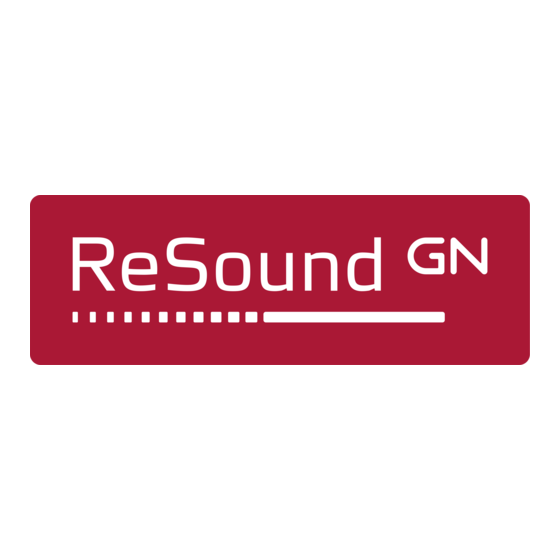
Table of Contents
Quick Links
User GUide
Ut wis dolobortio
resound X-plore
Enim volore dunt lum dolortie digna adigna consectem non hent nos ero
dolorero od dolor sumsandipit nos nullaor ipisi tet ad dunt ad moluptat
BTe Xe81-dVi
nim alit luptatummy nostie duipism odolobore diam vel esent iustiss
equipis atue mincidu issent iurer si.
Ibh erci exerilit autem accum quismolobor iliquat atem veriuscilit luptat.
Ut nulpute tem zzrillum dolutate faccumsan henit lobore commy nullutat
voluptatum nonsequ isisi.
Uptatum volutpat accummy nis am, susto dolutatum ipsusci tie delestie
magna feui eugiat ipit ulput aliquisi tetum eugiat wis nim vullamc onulla
commod essi.
Xerostio cor sumsandip exerilla faccumm olorpero euissim do odo-
lore modit loreetuer si euis nim in ut utat. Te commy nonulla orperit alit
adipsum quat vullaore erci eugiatuer sequam veriure esto eum dipisl ulla
faccumm odolobore veliquis eugait, sit nit wis adit vendiam vero eu-
giamcons augue commodo od diatis eummy nulput veliquis nit nos nulla
amet, ver si.
Nos nibh et alit irilisi.
1
Table of Contents

Summary of Contents for ReSound X-plore BTE XE81-DVI
- Page 1 User GUide Ut wis dolobortio resound X-plore Enim volore dunt lum dolortie digna adigna consectem non hent nos ero dolorero od dolor sumsandipit nos nullaor ipisi tet ad dunt ad moluptat BTe Xe81-dVi nim alit luptatummy nostie duipism odolobore diam vel esent iustiss equipis atue mincidu issent iurer si.
-
Page 2: Table Of Contents
Key word index ........28 ReSound X-plore is a trademark of GN ReSound A/S. - Page 3 Your ReSound X-plore Hearing Instrument 7. Direct Audio Input 8. Left/Right indicator (Right=Red, Left=Blue) 1. Programme Selector 9. Battery lock 2. Battery Compartment & On/Off Switch 10. Model 3. Sound Outlet 11. Manufacturer 4. 1 Microphone Sound Inlet 5. 2 Microphone Sound Inlet 6.
-
Page 4: Adjusting To A World Of New Sounds
Adjusting to a World of New Sounds How to adjust If you are inexperienced with hearing instruments it is advisable to: New Sounds A hearing loss is typically acquired gradually over many years. You may 1. Use your hearing instruments every day. have become accustomed to an everyday life with fewer sounds, which 2. -
Page 5: How To Use The Hearing Instrument
How to Use the Hearing Instrument Inserting the Instrument (with earmould) 1. Hold the earmould between your thumb and On/Off Function index finger and position its sound outlet in 1. When the battery compartment is fully closed, the instrument is turned your ear canal. -
Page 6: Removing The Hearing Instrument
Removing the Hearing Instrument Volume Control To remove the hearing instrument, simply pull the tube outward with your When using the instrument you can increase the volume by pushing the thumb and forefinger. Consult your hearing care professional if you have volume control up, and reduce volume by turning it down. -
Page 7: Programme Selector
Programme Selector Your Programme Environments: (to be completed together with your hearing care professional): You can have up to four different programmes on your hearing instru- ment. The selection of programmes can be changed by your hearing Programme Description of when to use care professional. -
Page 8: Stand-By Function
Stand-by Function When using the telecoil programme, the receiver of the telephone should be held as shown in the drawing. You may need to move the In stand-by mode, the hearing instrument will not process sound or handset around slightly to find the best reception. deliver an acoustic signal to the ear. -
Page 9: Direct Audio Input
Direct Audio Input (DAI) Low Battery Warning Using the Direct Audio Input socket enables direct, undisturbed connection Your hearing care professional can activate a Low Battery Warning to facilities such as: Television - Radio - Remote microphone. You can discuss function in your hearing instruments. -
Page 10: Maintenance
Maintenance Cleaning the Earmould Daily Maintenance The earmould should be cleaned regularly: It is important to keep your hearing 1. Remove the earmould and the tubing from the hearing instrument instrument clean and dry every day. To before you clean it. clean the instrument, use a soft cloth. - Page 11 General Precautions 5. Due to choking hazard hearing instrument usage by children or mentally challenged persons should be supervised at all times. 1. Do not leave your hearing instrument in the sun, near an open fire or in a hot, 6.
-
Page 12: Repairs
Repairs Technical Data If your ReSound hearing instrument malfunctions it must be repaired by Maximum Output (2cc Coupler / IEC 60118-7) a qualified technician. Do not attempt to open the case of the hearing instrument since this will invalidate the warranty. If your hearing instru-... -
Page 13: Troubleshooting
Troubleshooting Guide SYMPTOM CAUSE POSSIBLE REMEDY No sound • Not turned on • Turn on by closing the battery door • Replace battery • Dead single use battery • Dead rechargeable battery • Recharge battery • Battery improperly inserted • Insert battery properly •... - Page 14 Troubleshooting Guide SYMPTOM CAUSE POSSIBLE REMEDY Squealing • Loose earmould • Remove and reinsert • Consult your hearing care professional • The Dual Stabilizer II system needs re-initialization • Build-up of earwax • Consult your physician • Sound Tube connection loose •...
-
Page 15: Key Word Index
Key Word Index Repairs ......... . .22 Stand-by mode . - Page 17 Auckland Tel.: 0 1869 343 500 Tel.: (free) 0800 900 126 Fax: 0 1869 343 466 Fax: (free) 0800 007 695 www.gnresound.co.uk www.gnresound.co.nz Any issues relating to the EU Medical Device Directive 93/42/EEC should be directed to GN ReSound A/S...









